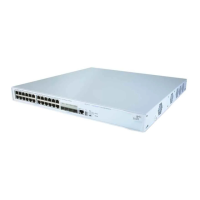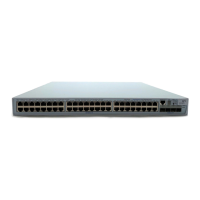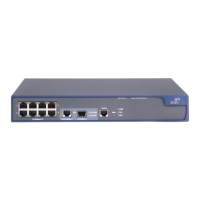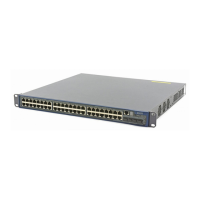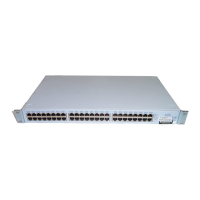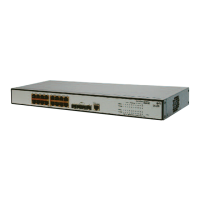RSTP Configuration 183
By default, the Switch calculates the default Path Cost of a port by the IEEE 802.1t
standard.
Set the Priority of a
Specified Port
The port priority is an important basis to decide if the port can be a root port. In
the calculation of the spanning tree, the port with the highest priority will be
selected as the root assuming all other conditions are the same.
You can use the following command to set the priority of a specified port.
Perform the following configurations in the Ethernet Port View.
Tab le 184 Set the Priority of a Specified Port
By setting the priority of an Ethernet port, you can put a specified Ethernet port
into the final spanning tree. Generally, the lower the value is set, the higher
priority the port has and the more likely it is for this Ethernet port to be included in
the spanning tree. If all the Ethernet ports of the bridge adopt the same priority
parameter value, then the priority of these ports depends on the Ethernet port
index number. Note that changing the priority of Ethernet port will cause
recalculation of the spanning tree. You can set the port priority at the time when
setting up the networking requirements.
By default, priorities of all the Ethernet ports are 128.
Configure a Specified
Port to be Connected to
Point-to-Point Link
Generally, a point-to-point link connects the Switches.
You can use the following command to configure a specified port to be connected
to a point-to-point link.
Perform the following configurations in the Ethernet Port View.
Tab le 185 Configure a Specified Port to be Connected to a Point-to-Point Link
The two ports connected via the Point-to-Point link can enter the forwarding state
rapidly by transmitting synchronous packets, so that the unnecessary forwarding
delay can be reduced. If this parameter is configured to be
auto mode, RSTP can
automatically detect if the current Ethernet port is connected to a Point-to-Point
Restore the default standard to be used undo stp pathcost-standard
Operation Command
Operation Command
Set the priority of a specified port stp port priority port_priority
Restore the default priority of the specified port undo stp port priority
Operation Command
Configure a specified port to be connected to a
point-to-point link
stp point-to-point
force-true
Configure a specified port not to be connected to a
point-to-point link
stp point-to-point
force-false
Configure RSTP to automatically detect if the port is
connected to a point-to-point link.
stp point-to-point auto
Configure the port to be automatically detected if it is
connected to a point-to-point link, as defaulted
undo stp point-to-point

